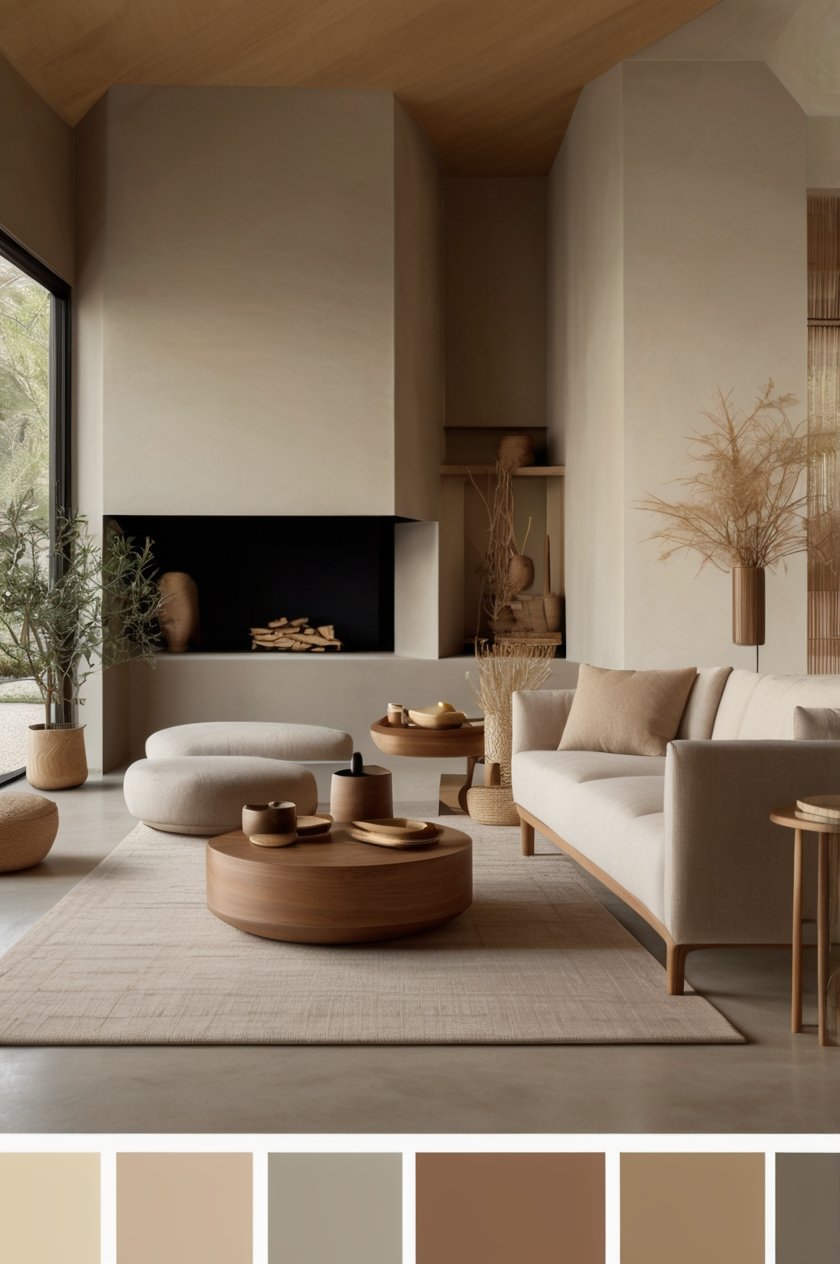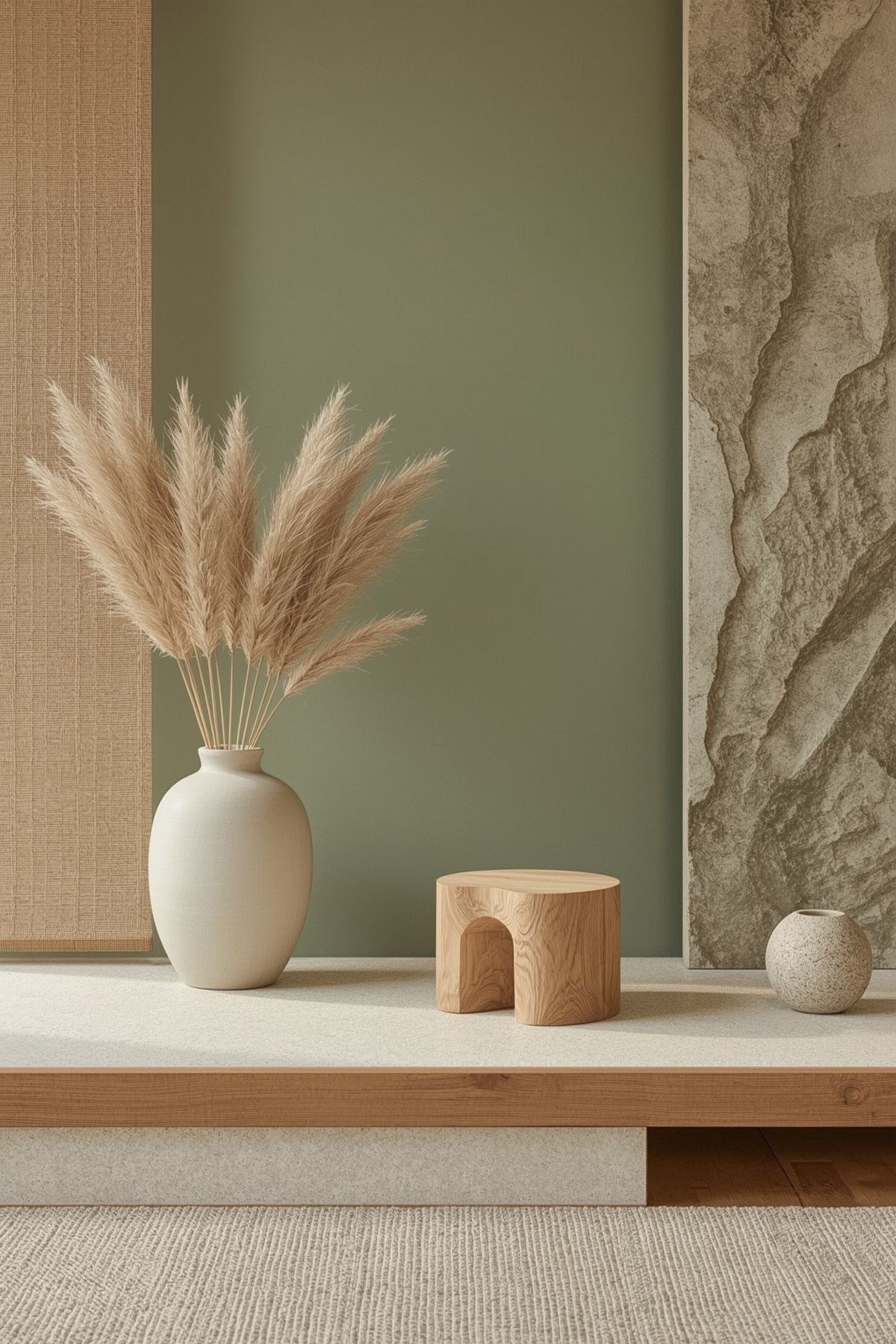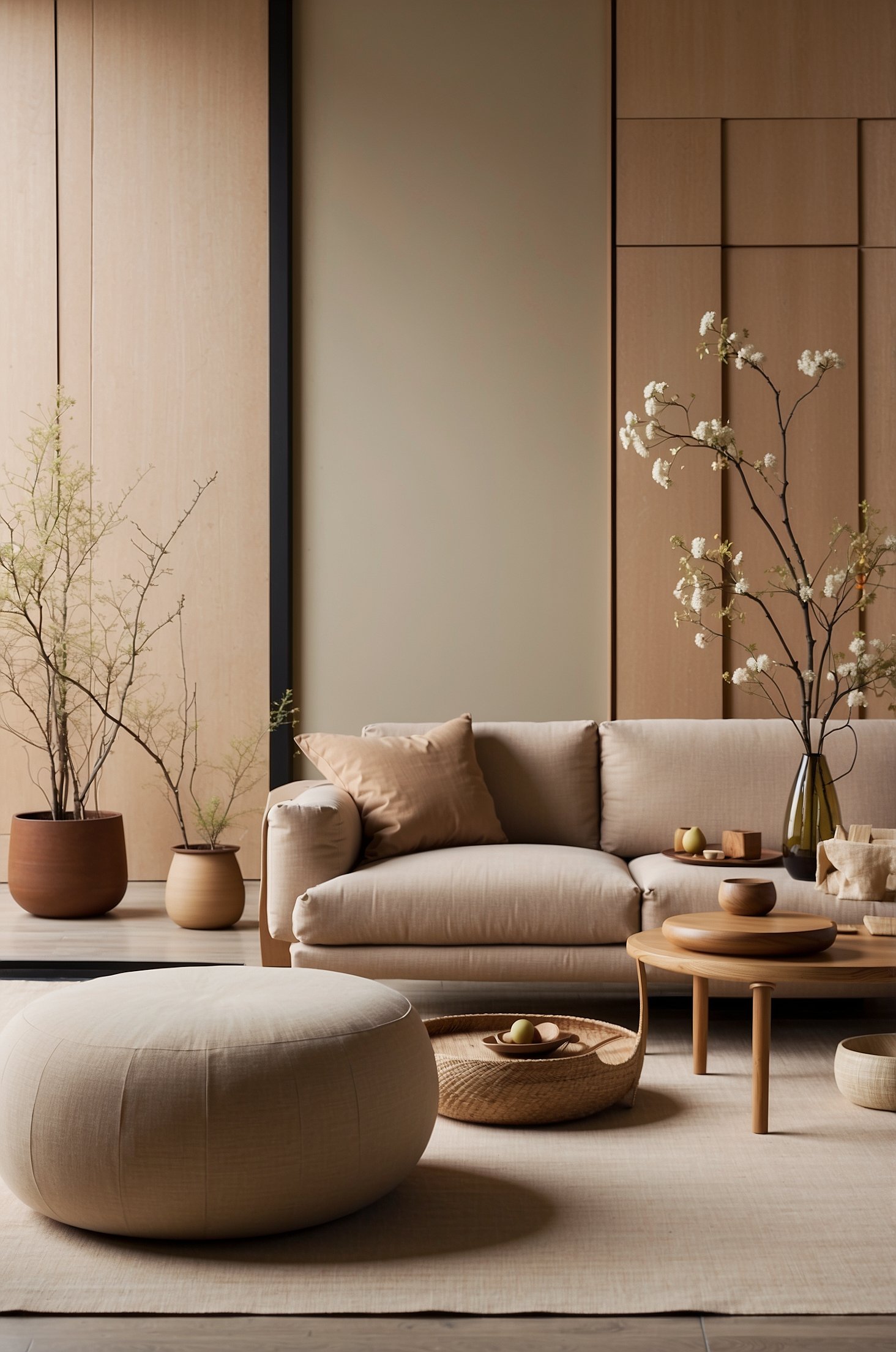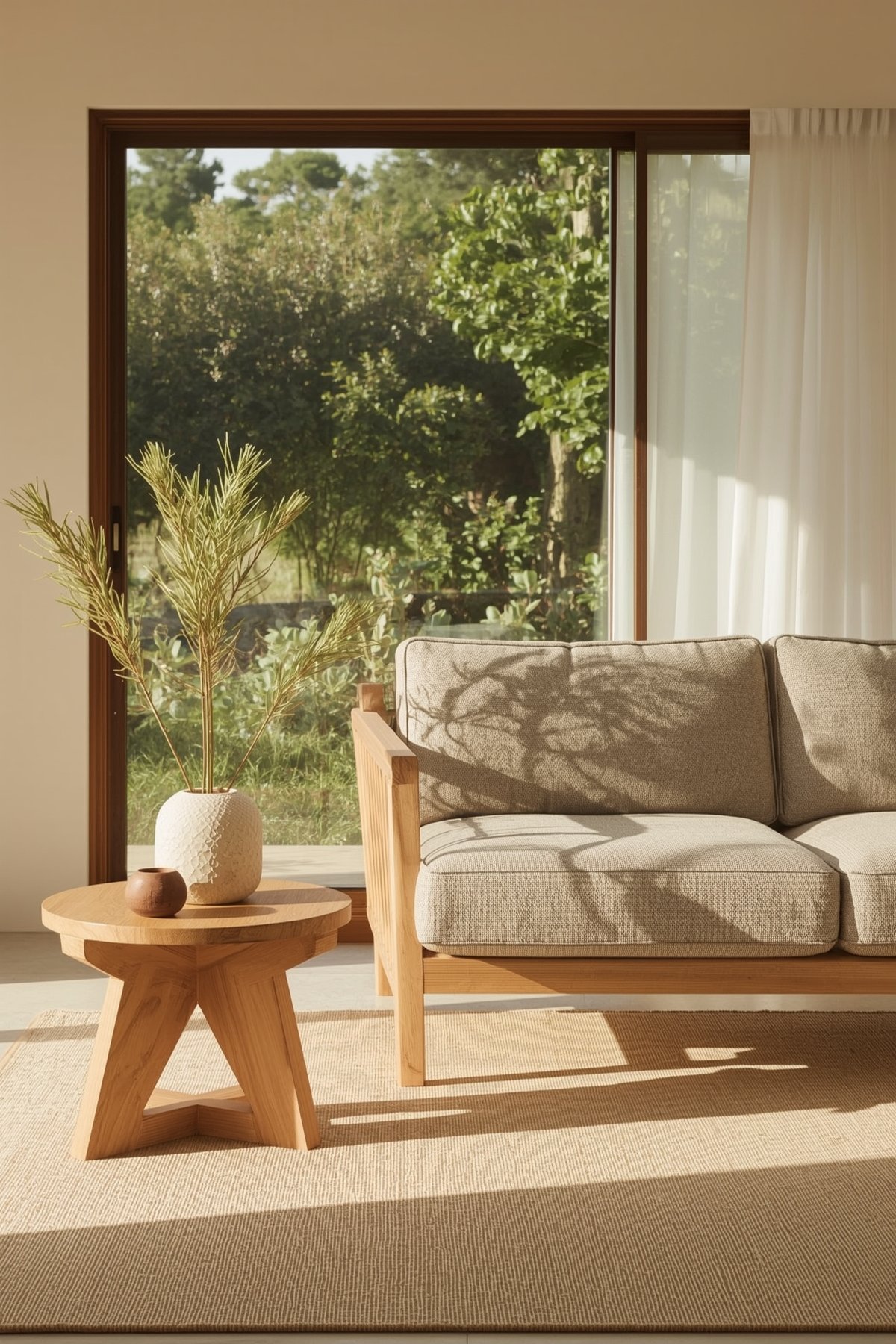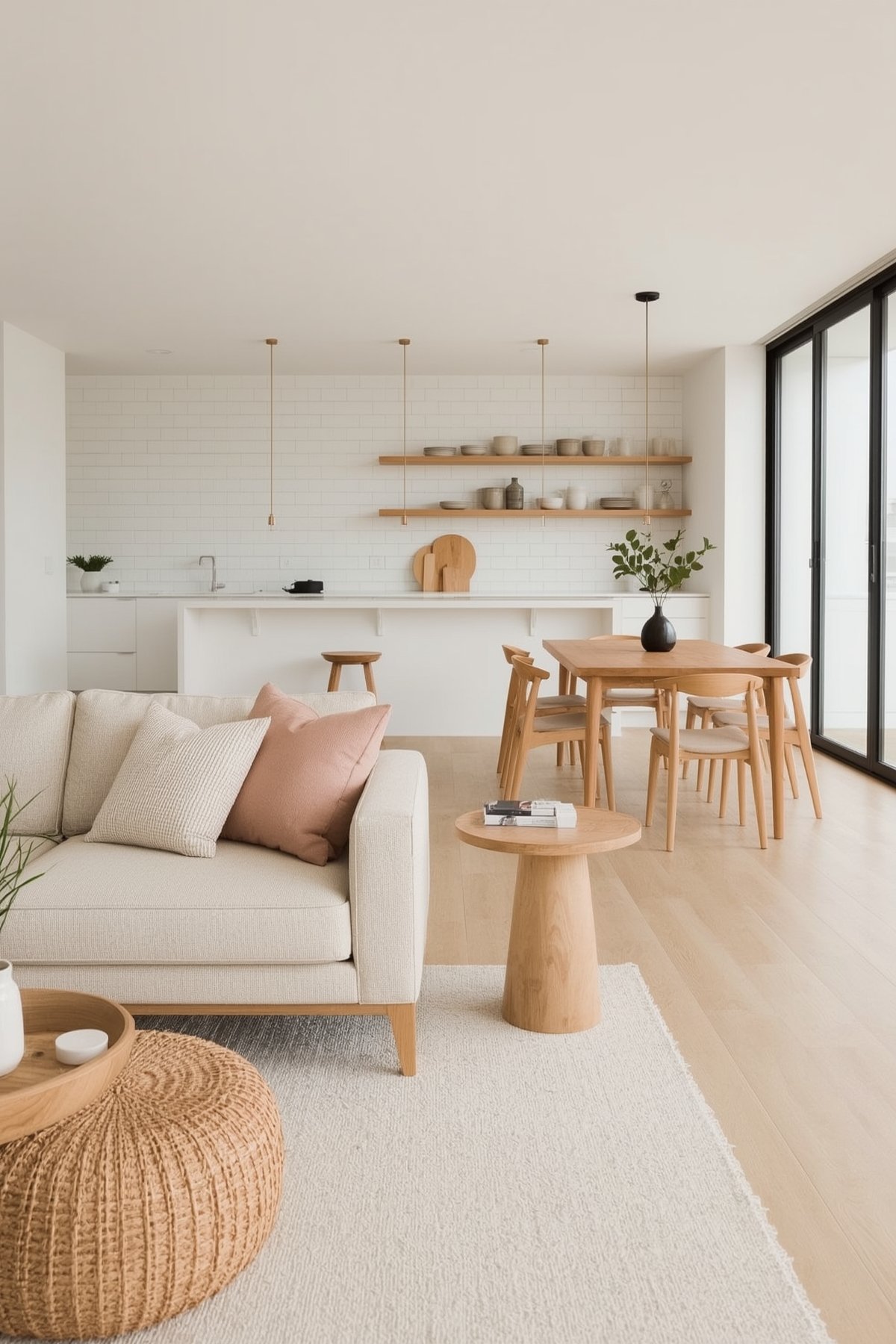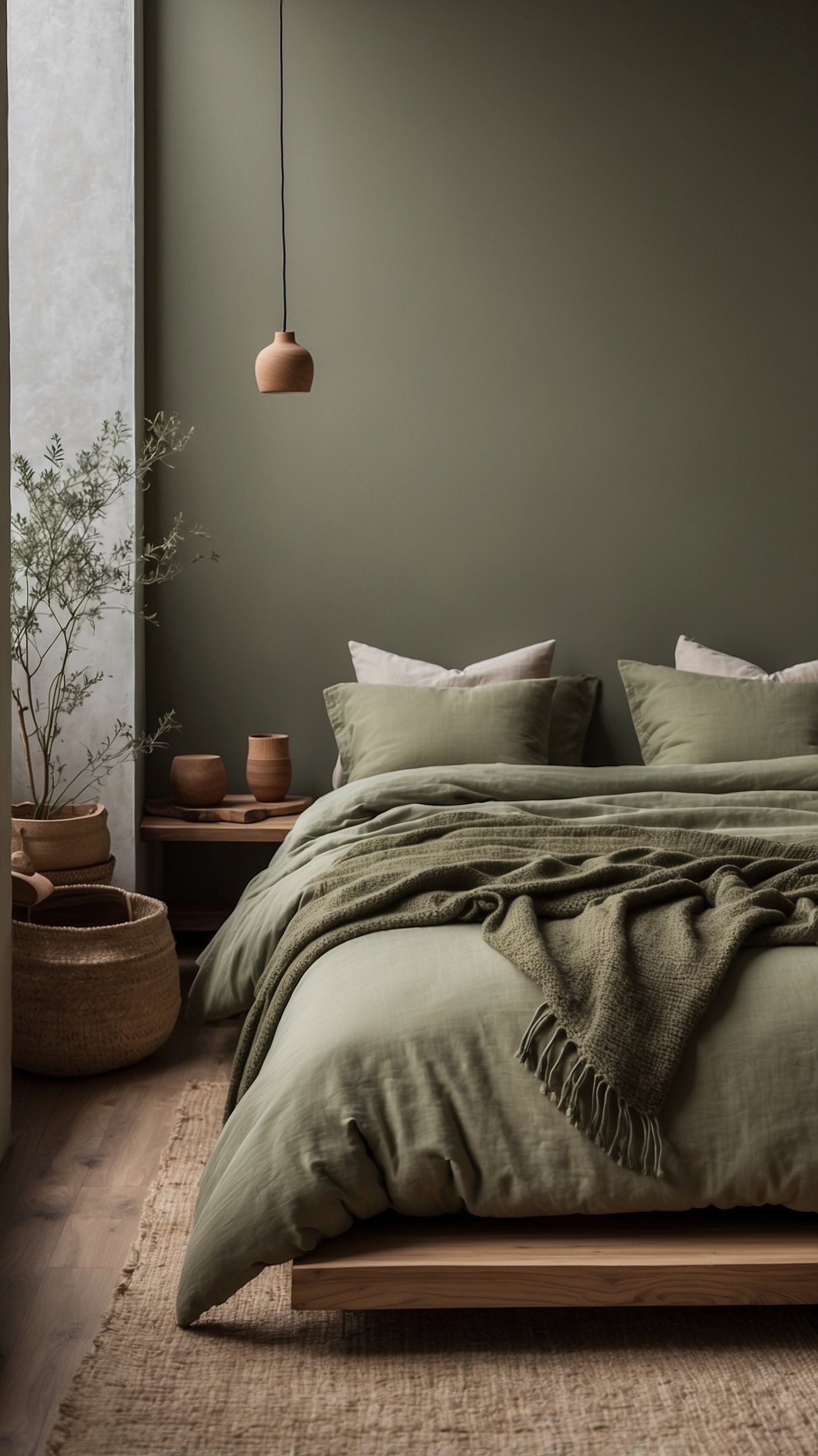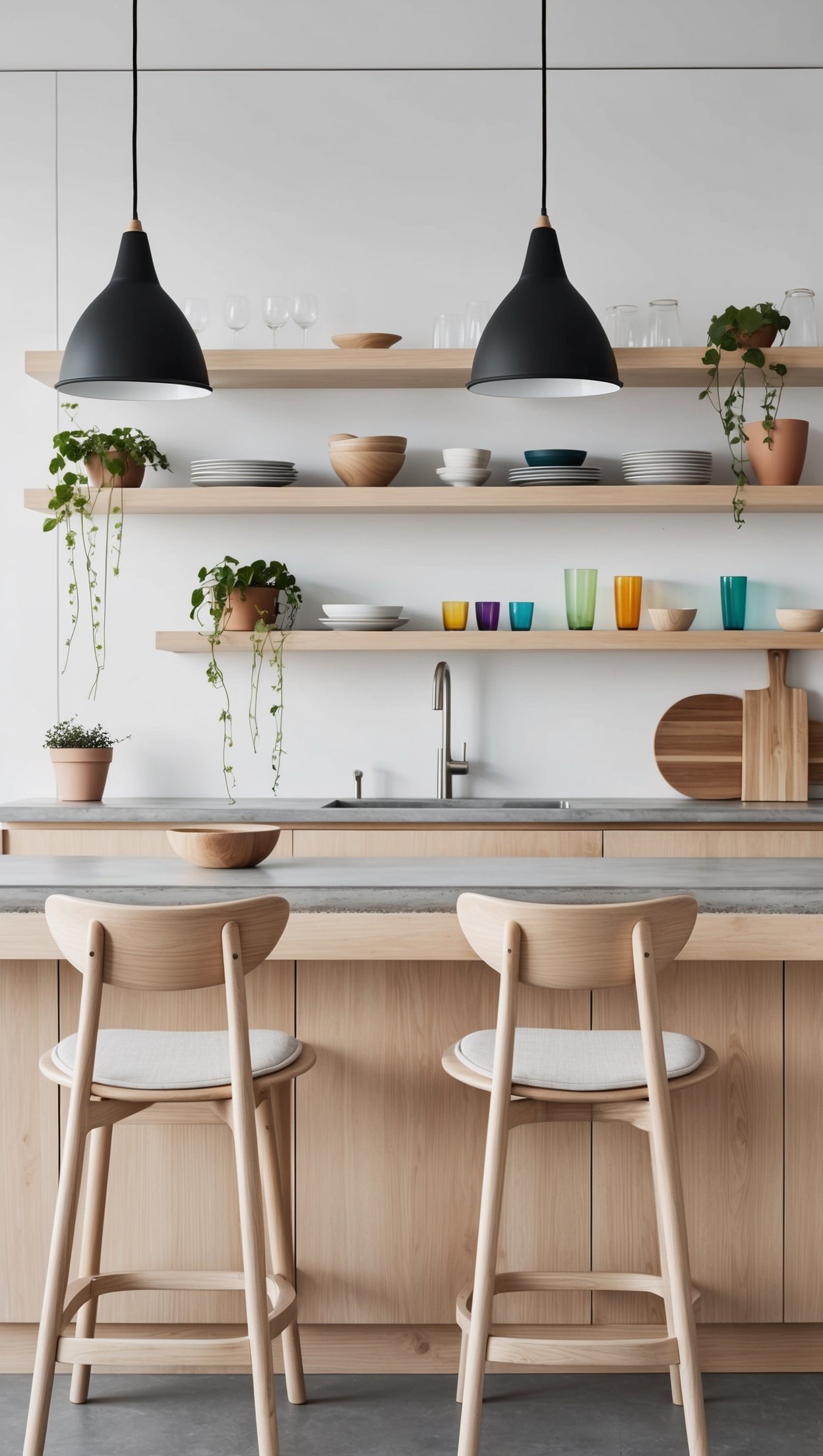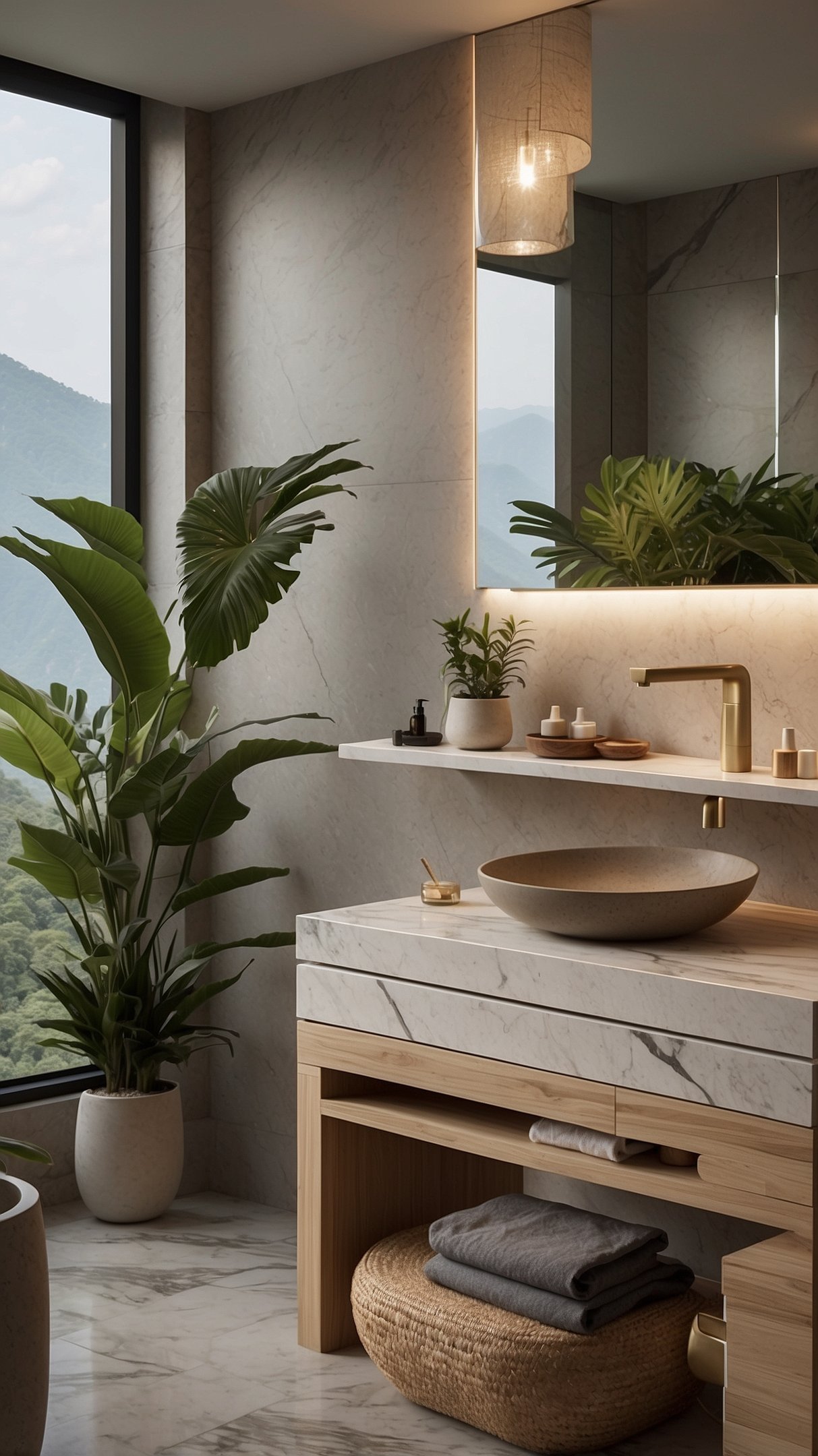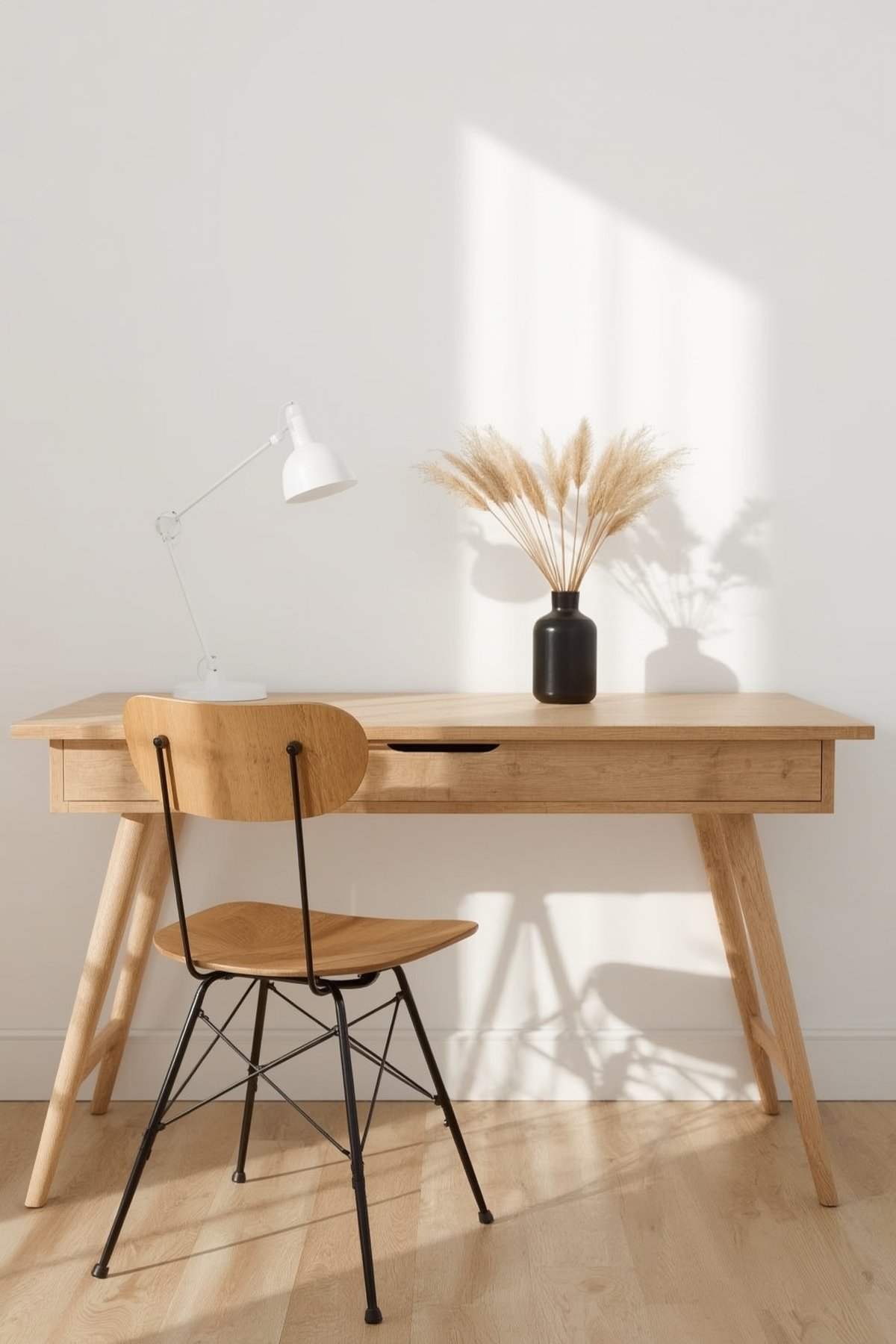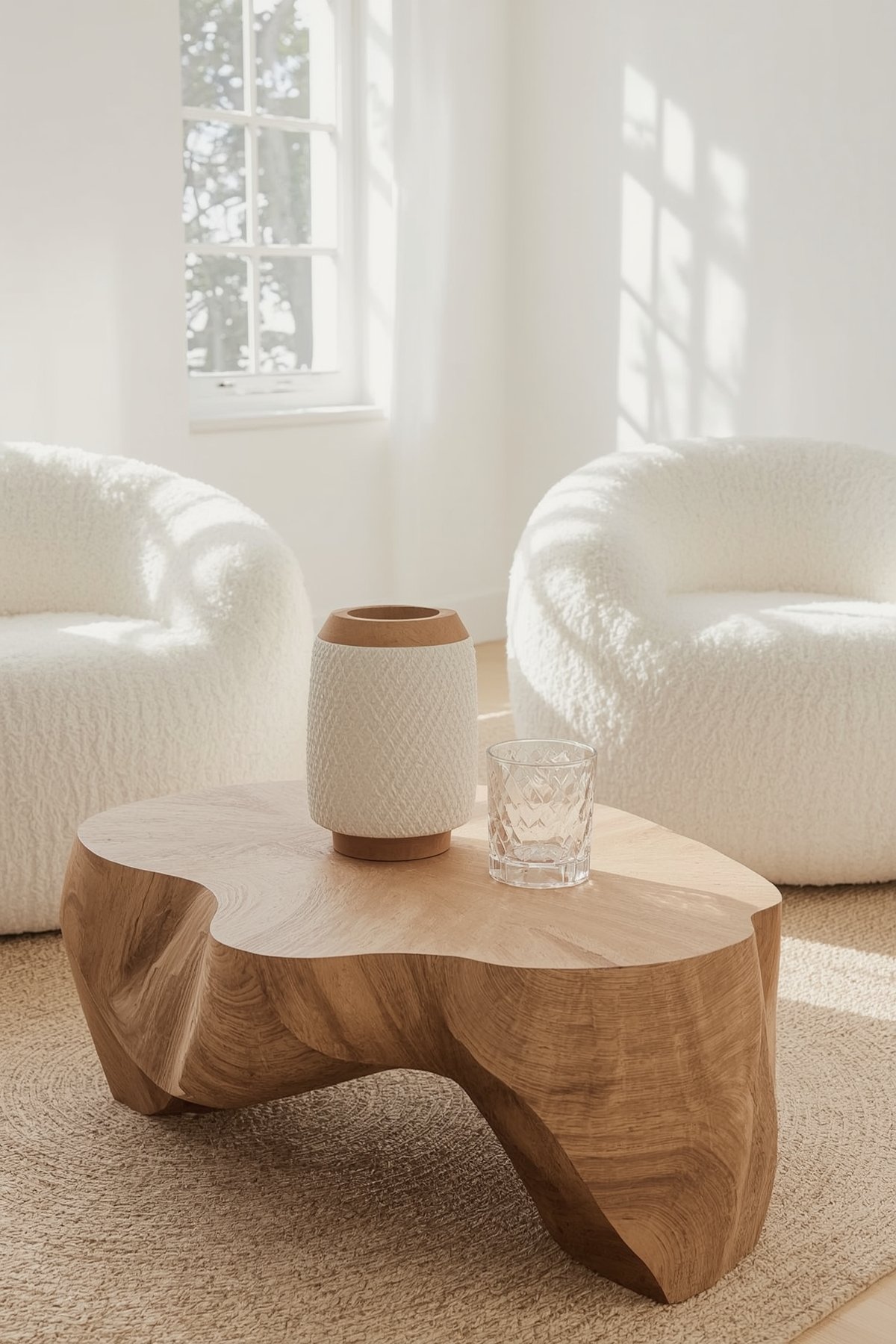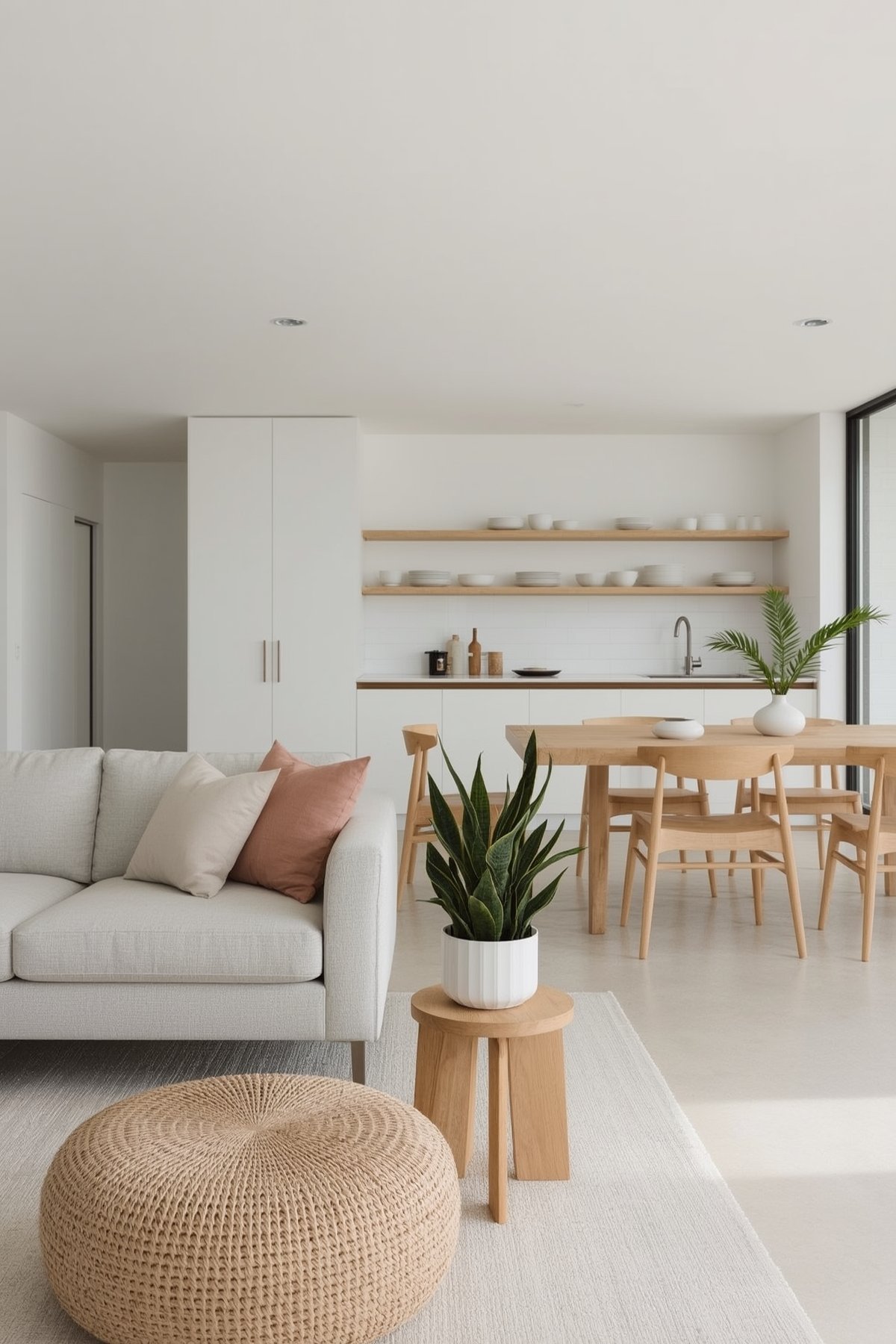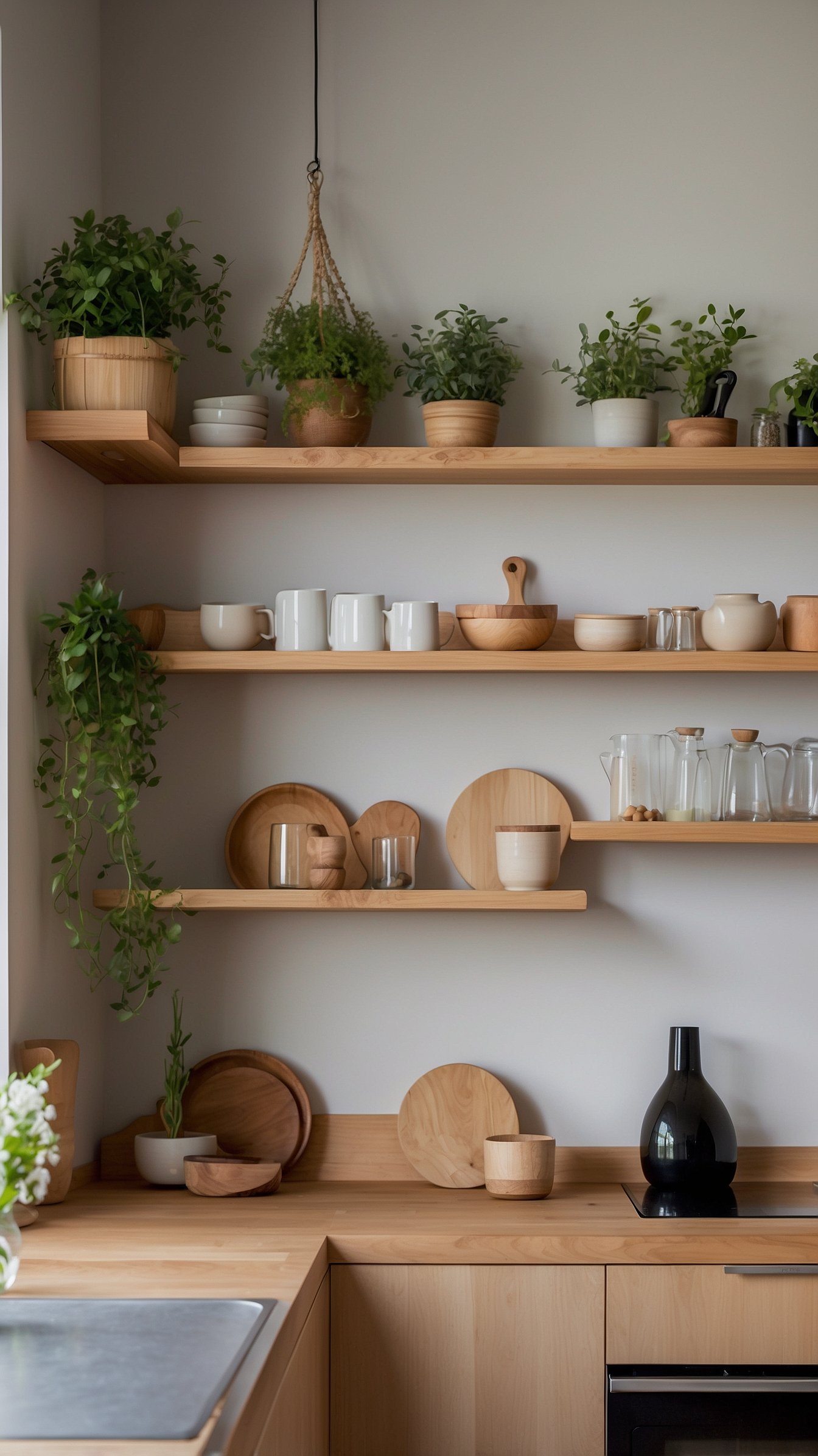Cozy Japandi Organic Modern Interior Design and Decor: Timeless, Natural style
When I visited my friend’s new home, I felt a calm vibe. The mix of nature and modern style made her living room peaceful. This is what Japandi Organic Modern is all about, becoming popular everywhere.
I love how Japandi combines natural warmth with modern simplicity. It’s great for those who like contemporary design but also want a cozy home.
Key Takeaways
- Understanding the basics of Japandi Organic Modern
- How to incorporate natural elements into your home
- Tips for achieving a balanced modern aesthetic
- Creating a serene and inviting living space
- Popular design elements to enhance your home’s ambiance
What Is Japandi Organic Modern?
Exploring Japandi Organic Modern, I found a blend of minimalist aesthetics and green living. It’s more than a trend; it’s a way to make homes both lovely and earth-friendly.
The Origins of This Hybrid Design Style
Japandi Organic Modern mixes Japanese simplicity with Scandinavian practicality. It’s rooted in sustainable architecture. This means making spaces that live in harmony with nature.
Core Principles and Philosophy
Japandi Organic Modern is all about eco-friendly interiors. It aims to bring peace and happiness. It values simplicity, green living, and natural beauty.
By using organic parts and cutting down on waste, it makes spaces calm and welcoming.
Why I Fell in Love with Japandi Organic Modern
My journey into interior design led me to Japandi Organic Modern. It’s not just about looks; it’s a lifestyle. It values simplicity, sustainability, and nature.
My Design Journey
I love natural materials and how they change a space. Japandi Organic Modern uses wood, stone, and clay. My home now has modernist furniture that tells stories.

The Calming Effect on My Home and Life
Japandi Organic Modern changed my home and life. It made me add more plants, improving air and calm. My home is now a peaceful sanctuary.
This design mix of Japanese and Scandinavian styles makes my space feel grounded yet airy. It shows how design can improve our lives.
Essential Elements of Japandi Organic Modern
Exploring Japandi Organic Modern, I see a mix of organic and modern. It’s more than looks; it’s a way to live in harmony. It uses organic design principles to make spaces feel right.
Clean Lines Meet Natural Forms
Japandi Organic Modern mixes clean lines with natural shapes. This mix adds warmth and texture. It uses natural materials and shapes that remind us of nature.

Functional Minimalism with Organic Touches
At its heart, Japandi Organic Modern is about simplicity. It removes clutter and focuses on what’s needed. Sustainable aesthetics come from choosing materials and decor that are both beautiful and green.
Wabi-Sabi and Imperfect Beauty
Japandi Organic Modern loves Wabi-Sabi, a Japanese idea that sees beauty in flaws. This idea makes an eco-friendly interior by valuing natural materials and their stories.
This philosophy makes a peaceful space that connects with nature. It’s perfect for those wanting a greener, more meaningful life.
Creating a Japandi Organic Color Palette
Exploring Japandi Organic Modern, I found its beauty in its color palette. A good color scheme can make your home feel calm and peaceful. It shows the beauty of modern organic decor and minimalist chic.

Neutral Foundations
A Japandi Organic color palette starts with neutral colors like white, beige, or soft gray. These colors make a clean background for adding earthy touches. Using a neutral base lets me add colors and textures easily.
Earthy Accents and Muted Tones
To make your space unique, add earthy colors like terracotta, sienna, or moss green. These colors warm up the space and connect it to nature. You can use them in furniture, rugs, or decorations.
How I Balance Light and Dark Elements
Mixing light and dark colors is key in Japandi Organic Modern. I mix light colors with deeper ones. For example, a light gray wall with dark wood furniture creates a nice contrast. This balance makes a green home decor that’s both calm and interesting.
Natural Materials: The Heart of Japandi Organic Modern
Exploring Japandi Organic Modern, I see how natural materials create a calm, green space. This style uses organic parts to make a room look good and help the planet.

Wood, Stone, and Clay
Wood, stone, and clay are key in Japandi Organic Modernism. Wood warms a room with its texture. Stone makes a space feel strong and lasting. Clay, found in pottery, adds a simple, earthy touch.
These materials look great and help make a clean, simple space.
Sustainable Textiles and Fibers
Choosing the right textiles and fibers is also crucial. Organic cotton, linen, and hemp are good choices because they’re kind to the earth. They’re used in furniture and bedding to connect us to nature.
Mixing Textures for Visual Interest
Mixing textures is a big part of Japandi Organic Modern. Combining smooth stone with rough wood or soft fabrics with natural fibers adds depth. This makes a room look interesting and feel welcoming.
Using natural materials and eco-friendly furniture, Japandi Organic Modernism is a beautiful, green way to design homes.
How to Transform Your Home Room by Room
Starting my Japandi Organic Modern journey, I found each room a chance to mix modern style with green design. It’s not just about looks. It’s about making a space that’s good for you and the planet.

Living Room: Creating a Serene Gathering Space
The living room is the heart of the home, where everyone comes together. To make it calm, use simple shapes and few decorations.
Furniture Arrangement and Key Pieces
Set up furniture for easy talking and moving around. A low-profile sofa in natural fabric and a wooden coffee table bring peace. Remember, empty space is key to avoid mess.
Lighting and Accessories
Soft lights change a room’s feel. Use table lamps with natural linen shades for warmth. Keep accessories simple, like a vase with branches or a natural stone.

Bedroom: Designing for Restful Sleep
The bedroom should be a calm place to rest and refresh. Japandi Organic Modern helps make it peaceful.
Bed and Textile Selection
Get a bed with a simple frame and choose natural fiber bedding. Linen or cotton are best for their breathability and softness.
Creating a Clutter-Free Sanctuary
Keep clutter away with stylish storage. A clutter-free space is essential for a good night’s sleep.
Kitchen and Dining: Functional Beauty
In the kitchen and dining, focus on being useful and simple. Use natural materials for surfaces and keep it minimal.
Bathroom: A Personal Spa Retreat
Make your bathroom a spa with natural elements like stone or wood. Keep it clean and simple.
Selecting Furniture for Your Japandi Organic Space
In Japandi Organic Modern, furniture is more than just form and function. It’s about creating a space that reflects your style and cares for the environment. The right furniture can make your home look amazing.

Key Pieces Worth Investing In
Choosing a few key furniture pieces can really make your Japandi Organic Modern space pop. Look for items made from sustainable materials like reclaimed wood, bamboo, or rattan. A wooden coffee table or a rattan armchair can bring character and follow eco-conscious modern decor principles.
Balancing Form and Function
Japandi Organic Modern is all about finding the perfect balance between looks and use. Pick furniture that looks good and is also useful. For example, a storage ottoman can keep things tidy while keeping your space simple.
Vintage and Handcrafted Elements
Adding vintage and handcrafted items to your space can make it truly special. Find unique pieces at local thrift stores or artisan markets. These items not only help the planet by reducing waste but also add your personal touch to your home.
Bringing Nature Indoors: Plants and Biophilic Design
Exploring Japandi Organic Modern shows us the importance of nature indoors. It’s not just about looks. It’s about making a space that feels connected to the outdoors.
Best Plants for Japandi Organic Interiors
Choosing the right plants is key for Japandi Organic interiors. Look for plants with simple shapes that match the minimalist look. Snake Plants and Pothos are great because they’re easy to care for and look beautiful.
Natural Decorative Elements
Adding driftwood, stones, and shells brings nature inside. These elements add depth and character to your space. They make your space feel more connected to the outdoors.
Creating Indoor-Outdoor Flow
To blend indoors and outdoors, use big windows and sliding glass doors. Outdoor spaces that match your indoor decor are also good. This makes your living area feel bigger and connects you more to nature.
Using plants, natural decor, and indoor-outdoor flow brings Japandi Organic Modern to life in your home. It creates a peaceful and eco-friendly living space.
Sustainable Practices in Japandi Organic Modernism
Japandi Organic Modern is more than a design style. It’s a way to live sustainably. As I dive deeper, I see that living green is at its heart.

Eco-Friendly Material Selection
At the core of Japandi is using green materials. Think reclaimed wood, bamboo, and paints that don’t harm the air. These choices help our planet and make homes healthier.
Energy Efficiency and Natural Light
Using natural light is key in Japandi design. Mirrors and light curtains help cut down on artificial light. Plus, energy-saving gadgets and LEDs use less power.
Reducing Waste Through Thoughtful Consumption
Japandi teaches us to buy wisely. Choose durable, quality items over fast, cheap ones. This way, we waste less and enjoy our homes more.
Embracing these green practices makes our homes beautiful and eco-friendly. Japandi shows us how design can improve our lives and the planet.
My Budget-Friendly Approach to Japandi Style
Creating a Japandi-inspired home doesn’t have to be expensive. I’ve focused on key investments, DIY projects, and thrifting. This way, I’ve made a beautiful and sustainable Japandi-style home.
Prioritizing Key Investments
Some things in Japandi Organic Modern are worth spending money on. For example, using eco-friendly materials like reclaimed wood or bamboo for furniture is a good choice. These materials are good for the planet and add warmth and character to your space.

DIY Projects I’ve Tackled
I loved making a macrame wall hanging with natural fibers. It was fun and added a special touch to my living room. I’ve also upcycled old furniture and made planters from natural materials.
Thrifting and Upcycling Tips
Thrifting and upcycling help make your Japandi-style home more sustainable. When thrifting, look for items with simple designs. You can also turn old jars or containers into unique decorations.
By using these budget-friendly tips, you can create a beautiful Japandi-style home. It will show off your personal style.
FAQ
What is Japandi Organic Modern?
Japandi Organic Modern mixes Japanese and Scandinavian design with organic modernism. It creates a unique look that’s simple and good for the planet.
How do I start incorporating Japandi Organic Modern into my home?
Start by cleaning up your space and adding natural materials like wood and stone. Bring in plants and use biophilic design. Begin with small steps, like using eco-friendly fabrics.
What are the key elements of Japandi Organic Modern?
Key elements include clean lines, natural shapes, and simple functionality. It also values Wabi-Sabi, which loves the beauty of imperfection. Natural materials like wood, stone, and clay are key.
How do I create a Japandi Organic color palette?
Start with a neutral base, then add earthy colors and soft tones. Mix light and dark to create a calm space. Think of the forest or ocean for color ideas.
What kind of furniture is suitable for Japandi Organic Modern?
Look for furniture that’s both beautiful and useful. Think of minimalist sofas with wood frames or wooden chairs. Invest in special pieces, like a wooden coffee table or a stone vase.
How can I make my Japandi Organic Modern space more sustainable?
Choose materials that are good for the planet, save energy, and waste less. Repurpose furniture and use second-hand or sustainable textiles.
Can I achieve Japandi Organic Modern on a budget?
Yes, by focusing on what’s important, doing DIY projects, and finding second-hand items. Start with small changes, like adding plants or using green cleaning products.
How do I incorporate biophilic design into my Japandi Organic Modern space?
Add plants, natural decor, and make your space feel like the outdoors. Use big windows or sliding doors. A living wall or botanical print can also help.
What are some eco-friendly materials I can use in my Japandi Organic Modern space?
Use reclaimed wood, bamboo, or wood that’s been certified by FSC. Natural fibers like hemp, linen, or cotton are also good. Choose paints and finishes that are safe for the planet.
The Bottom Line
I’ve found a lifestyle that mixes sustainability with calm living through Japandi Organic Modern. It uses natural materials and clean lines. This creates a home that shows my style and brings peace.
This lifestyle is more than design. It’s about living green. We choose eco-friendly stuff, cut down on waste, and use nature in our homes. This way, we make spaces that heal our souls and help the planet.
Starting your Japandi Organic Modernism journey is exciting. Add natural things like wood or plants to your home. Try simple colors and furniture that fits Japandi’s values.
Living this way makes your home beautiful and peaceful. It also helps our planet. The Japandi Organic Modern lifestyle is a great path. I’m looking forward to seeing where it leads you.

ABOUT the AUTHOR
TOKI; INTERIOR DESIGN & lifestyle CONTENT CREATOR.
Hey there! I’m Toki—the design-obsessed brain behind Dwell Studio 24. I’m a content creator passionate about interior design, photography, and creativity, living in a 77-year-old house with my husband and our awesome three kids. I write about interior design, furniture, home topics, and my lifestyle, including travel, recipes, skincare, and daily routines. I hope to inspire your next project and lifestyle!
ABOUT the AUTHOR
TOKI; INTERIOR DESIGN & lifestyle CONTENT CREATOR.

Hey there! I’m Toki—the design-obsessed brain behind Dwell Studio 24. I’m a content creator passionate about interior design, photography, and creativity, living in a 77-year-old house with my husband and our awesome three kids. I write about interior design, furniture, home topics, and my lifestyle, including travel, recipes, skincare, and daily routines. I hope to inspire your next project and lifestyle!
ABOUT the AUTHOR
TOKI; INTERIOR DESIGN & lifestyle CONTENT CREATOR.

Hey there! I’m Toki—the design-obsessed brain behind Dwell Studio 24. I write about interior design, furniture, home topics, and my lifestyle, including travel, recipes, skincare, and daily routines. I hope to inspire your next project and lifestyle!



